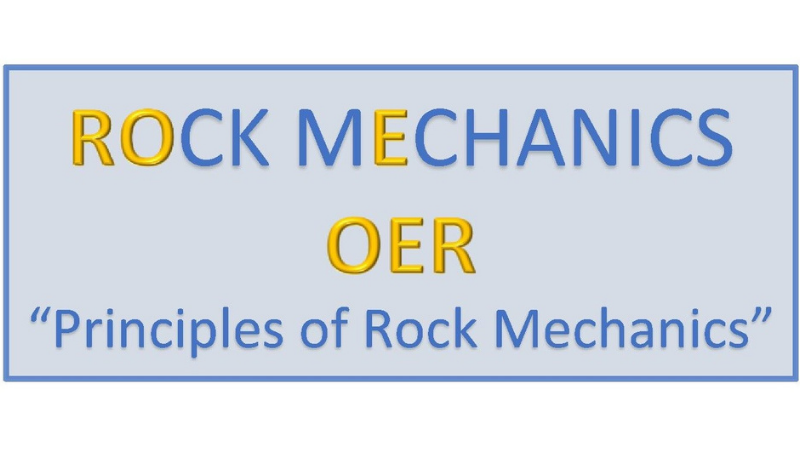You can’t spell “rock mechanics” without the letters “O, E and R”. With this connection in mind, I sought to find an Open Educational Resource (OER), in the form of a textbook in rock mechanics. This challenge is the result of another OER which is the course I am taking with Heather Ross entitled “Introduction to Open Educational Practices”. Assignment 6 was to find and evaluate an OER.
I am glad that following the O, E, and R trail lead to “Principles of rock mechanics” series of 9 readings (ie chapters) by Dr. Ruud Weijaermars. It is published under a Creative Commons Attribution – NonCommercial ShareAlike 4.0 International License. I have decided to use Chapters 2, 3 and 4 as supplemental materials for my third-year rock mechanics course. The other six chapters feature material that is beyond what I teach. Common imperial and metric units are introduced in Chapter 2. Force, pressure and stress are introduced in Chapter 3. Then in Chapter 4, the principal stresses are introduced along with the Mohr Circle. This resource surprised me because I expected to find a more traditional book focussing on the design of structures built in rock. Instead, it is the foundational theory that must be well understood before attempting designs. That is exactly what interests me!
Dr. Douglas Milne whose course I just took over introduces the same stress and force equations as in these textbooks. He gave weekly quizzes using these equations that all engineers learn in 1st and 2nd year. But when you switch up the concepts and think of Egyptian pharaohs moving blocks for pyramids like in Exercise 3-3, so many of us can get a few quizzes wrong while we figure out how to take theoretical concepts and apply them to practical examples in our lives. I liked this approach so much that I am continuing with it. This book provides exercises on almost every page and then the answers can be found in the Appendix.
The first sentence of Chapter 3 is “deformation of rocks is principally due to forces””. Chapter 4 opens with the statement “stress is a quantity perceived by many students to be more difficult to comprehend than force”. These simple sentences give the perception that he is writing the textbook out of a want to help students get over confusing concepts. As the book is on-line for free, this demonstrates that he wants students to strengthen their understanding of the fundamental math required of our discipline.
While my teaching methods do not completely align with all 9 chapters, these 3 chapters are still so applicable to my class materials. Instead of the typical sentence found in so many textbooks of “no part of this eBook may be reproduced or transmitted in any form or by any means, electronic, mechanical, recording, or otherwise, without written consent from the publisher”, he is inspiring me to question about whether these three chapters could be expanded upon by adding more practical examples that connect to the physical world. It can be challenging to come up with new examples, and by opening access to it, he is making it possible for the contributions of different individuals to add up to many examples.
Natural rock is inhomogeneous and can be complex. Providing exercises with solutions that widen the knowledge of what is already in literature can be a great help for improving the understanding by our students. These 3 chapters are the very basics upon which the application of rock mechanics is based on. Adding even more open and original examples to these fundamentals can help engineers to better understand rock behaviour.

